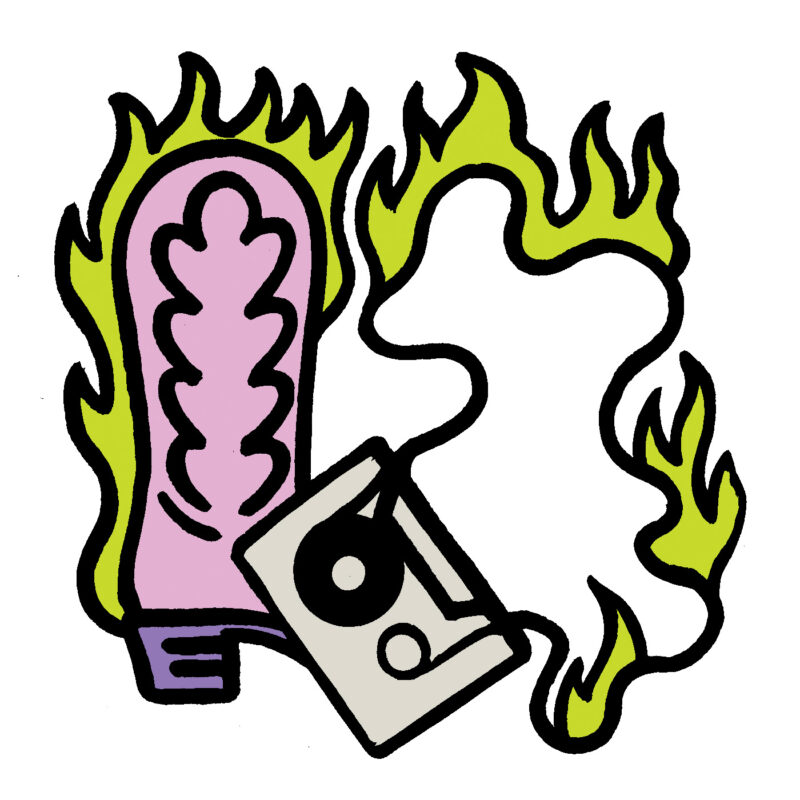It was Austin, Texas, in the middle of the Reagan era. There were Klan marches (and far larger counterprotests) on the Capitol, and the Republican National Convention set up shop a few hours away in Dallas. It was three years before the inaugural SXSW festival, which would eventually cement the city’s reputation as an industry-friendly international music destination. Meat Joy released their only full-length album, a joyful and defiant and uniquely Texan self-titled LP, in 1984.
Austin in 1984 might have been contradictory, but it was also affordable and exploding with eccentric creativity. Daniel Johnston was in the midst of a magical run of home-recorded cassettes, and the avant-garde rockers the Butthole Surfers were practicing what their drummer dubbed “Texas drag” (adopting stereotypical Texas drawls and clothing in service of subversion). Meat Joy’s Jamie Spidle remembers this Austin fondly: show flyers for imaginary bands littered the UT campus, and teenagers with boom boxes breakdanced on cardboard outside his band’s two-hundred-dollar-a-month warehouse rehearsal space.
All this chaos and activism and messy DIY spirit made its way onto Meat Joy. The band members, largely queer art and theater kids who operated as a leaderless collective, were intent on destroying the fourth wall at their shows. They passed instruments out into the crowd and held after-show art parties where friends and fans helped make their next batch of custom album covers. When it came to recording, that all-in spirit persisted: each member of Meat Joy served as “captain” of a handful of songs on the album, directing the arrangements and guiding their own sound. “We liked each other as friends and people so much that we were open to embracing whatever each of us brought to the band,” Mellissa DeMille recalled. “The friendship provided the freedom.”
The resulting record is a sonic documentary that captures Meat Joy and the kinetic Austin underground in equal measure. It opens with a moody lo-fi instrumental chamber piece, improvised on cello, recorder, and violin—an instrument that Spidle had never picked up before recording the track. “Prelude in Cb” has the qualities of both a regal orchestra tune-up and a pair of seagulls fighting over an abandoned ham sandwich. The angular studio-recorded punk sing-along “Another Pair” rails against the objectification of women. If those opening songs seem to exist in entirely different aural universes, there are more to come: Gretchen Phillips’s kid brother hollering over a discordant...
You have reached your article limit
Sign up for a digital subscription and continue reading all new issues, plus our entire archives, for just $1.50/month.
Already a subscriber? Sign in





